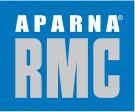10 Effective Ways to manage Stormwater using Porous Concrete

September 12, 2024
As urban areas expand, the need for effective stormwater management becomes more urgent. Traditional impervious surfaces like asphalt and non-porous concrete can exacerbate stormwater runoff issues, leading to flooding, erosion, and pollution. Porous concrete offers a solution by allowing water to pass through its structure, reducing runoff and promoting groundwater recharge.
What is Porous Concrete?
Porous concrete, also known as pervious or permeable concrete, is a specialized type of concrete designed with high porosity. This allows rainwater and runoff to pass through its surface and into the ground below. Unlike traditional concrete, porous concrete contains little or no fine aggregates (sand), which creates voids between the larger aggregates, enabling water to flow through easily.
Porous concrete serves as a sustainable stormwater management solution, reducing the burden on drainage systems while minimizing the environmental impact of urban development. Its key benefits include reducing the risk of floods, preventing erosion, and filtering pollutants from rainwater before it reaches the water table.
Want to learn more about the benefits of porous concrete? Check out our detailed guide.
Here are 10 effective ways to use porous concrete for managing stormwater in urban and suburban environments:
1. Permeable Driveways and Sidewalks
Porous concrete is ideal for creating permeable driveways and sidewalks. These surfaces allow rainwater to infiltrate the ground, preventing surface water pooling and easing the burden on stormwater systems. This is especially useful in residential areas where heavy rains can lead to localized flooding.
Interested in installing a porous concrete driveway? Contact us for more information here.
2. Parking Lots with Permeable Surfaces
Traditional parking lots contribute to significant stormwater runoff, leading to water pollution and strain on local water treatment systems. Permeable concrete provides a long-term solution, allowing rainwater to seep through the surface, reducing pollutants entering storm drains, and promoting groundwater recharge.
3. Porous Concrete for Residential and Commercial Roads
In regions prone to heavy rainfall, porous concrete can be used to construct roadways that quickly absorb water, reducing runoff and minimizing the risk of flooding. These roads are highly durable, resistant to cracking, and cost-effective in the long run due to reduced maintenance requirements.
4. Erosion Control Using Permeable Concrete
Permeable concrete is highly effective for erosion control, especially on slopes, embankments, and shorelines. Its water permeability allows it to manage runoff and prevent soil erosion, stabilizing landscapes and protecting natural environments.
5. Stormwater Retention and Infiltration Systems
Porous concrete is an integral component of stormwater management systems like retention basins, infiltration trenches, and swales. These systems capture stormwater, allowing it to slowly infiltrate the ground, filtering pollutants and recharging groundwater supplies. This process helps improve overall water quality and reduces the load on urban drainage infrastructure.
6. Permeable Pavers for Landscaping
Permeable concrete pavers are a popular choice for both residential and commercial landscaping projects. They combine aesthetics with functionality, allowing water to pass through the pavers into the underlying soil, reducing runoff while maintaining a clean and attractive appearance.
7. Porous Concrete in Green Infrastructure Projects
Green infrastructure projects aim to create sustainable urban environments by integrating natural processes into the built environment. Porous concrete plays a key role in such projects by promoting water infiltration and improving urban resilience to flooding and climate change.
For more on green infrastructure initiatives, explore our sustainability solutions page.
8. Tree Surrounds with Porous Concrete
In urban areas, trees often suffer from soil compaction and poor water infiltration. Porous concrete used in tree surrounds ensures that rainwater and oxygen can reach the roots, promoting healthy growth while also supporting the broader urban ecosystem.
9. Flood Control with Permeable Roadways
Permeable roadways made of porous concrete provide a reliable method for managing stormwater during intense rainfall. They prevent surface water buildup, which can lead to flooding, and improve driving safety by reducing the risk of hydroplaning.
10. Permeable Concrete in Retaining Walls
Retaining walls constructed from porous concrete help control soil erosion while also allowing water to pass through the structure. This reduces the buildup of hydrostatic pressure behind the wall, extending the lifespan of the wall and improving its overall performance.
Conclusion: Porous Concrete as a Solution for Stormwater Management
Porous concrete provides a versatile and sustainable solution to many of the challenges associated with stormwater management in modern cities. By allowing water to infiltrate naturally, it helps reduce runoff, prevent erosion, and recharge groundwater supplies, making it an essential material in building resilient infrastructure.
At Aparna RMC, with AquaCon Porous Concrete we specialize in creating high-performance porous concrete solutions tailored to your stormwater management needs. From residential driveways to commercial roads and green infrastructure projects, our products offer the durability and environmental benefits you’re looking for.
Explore our range of sustainable concrete products and solutions here.
